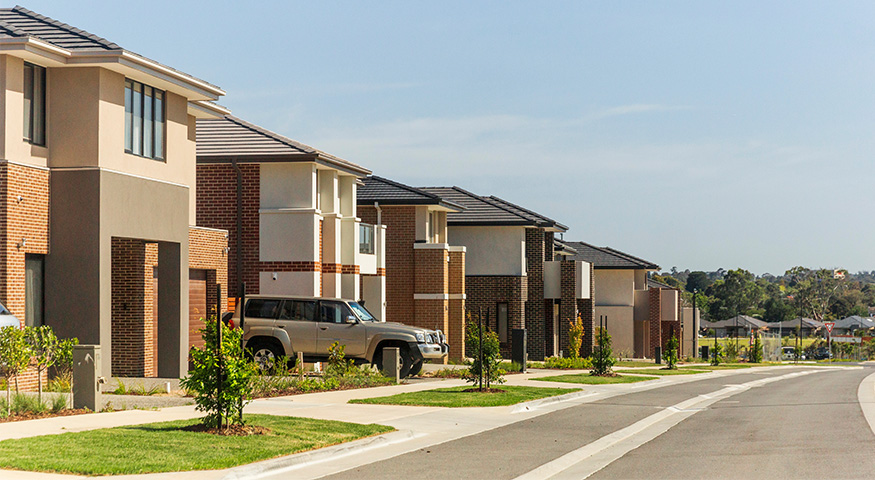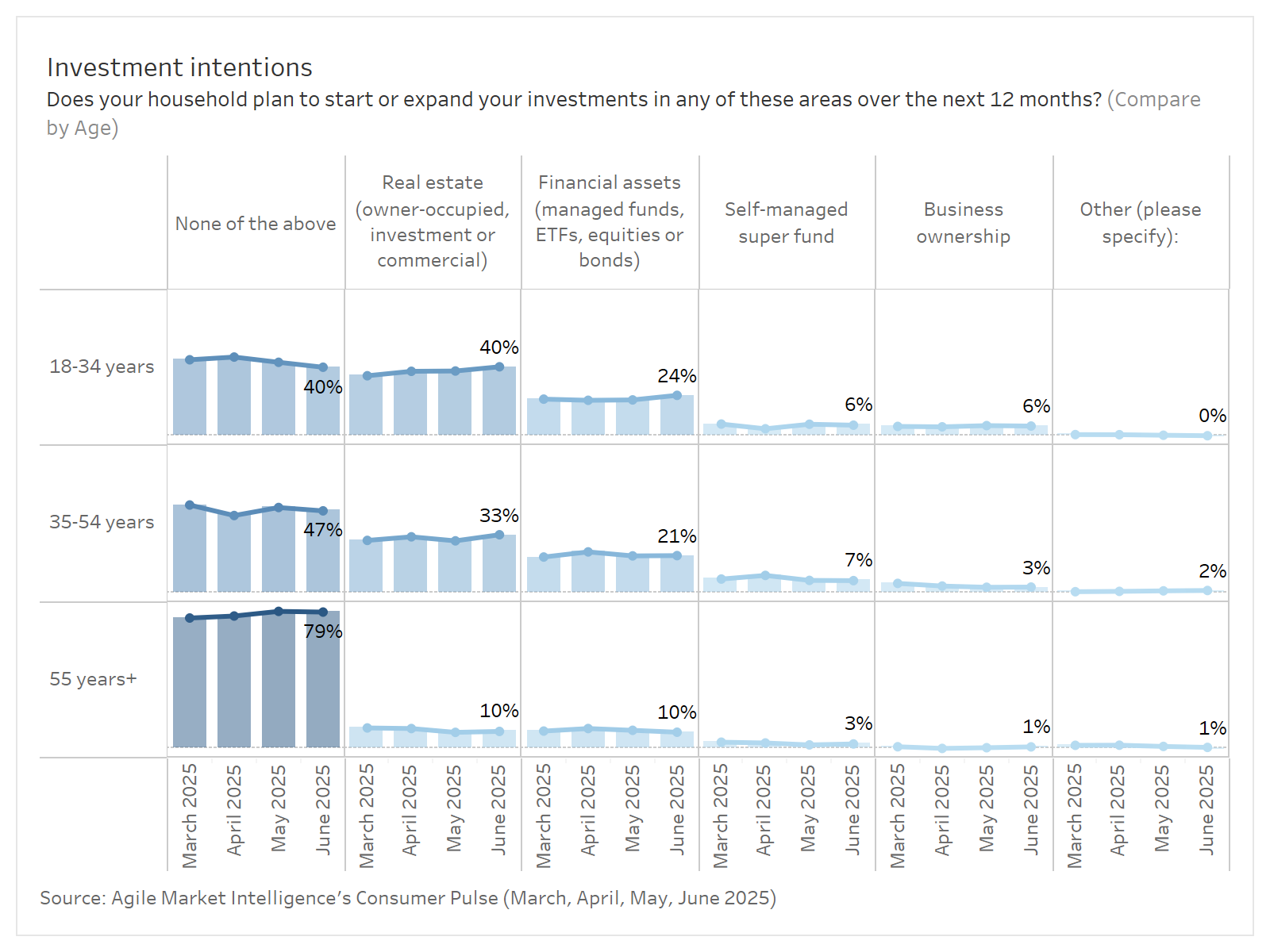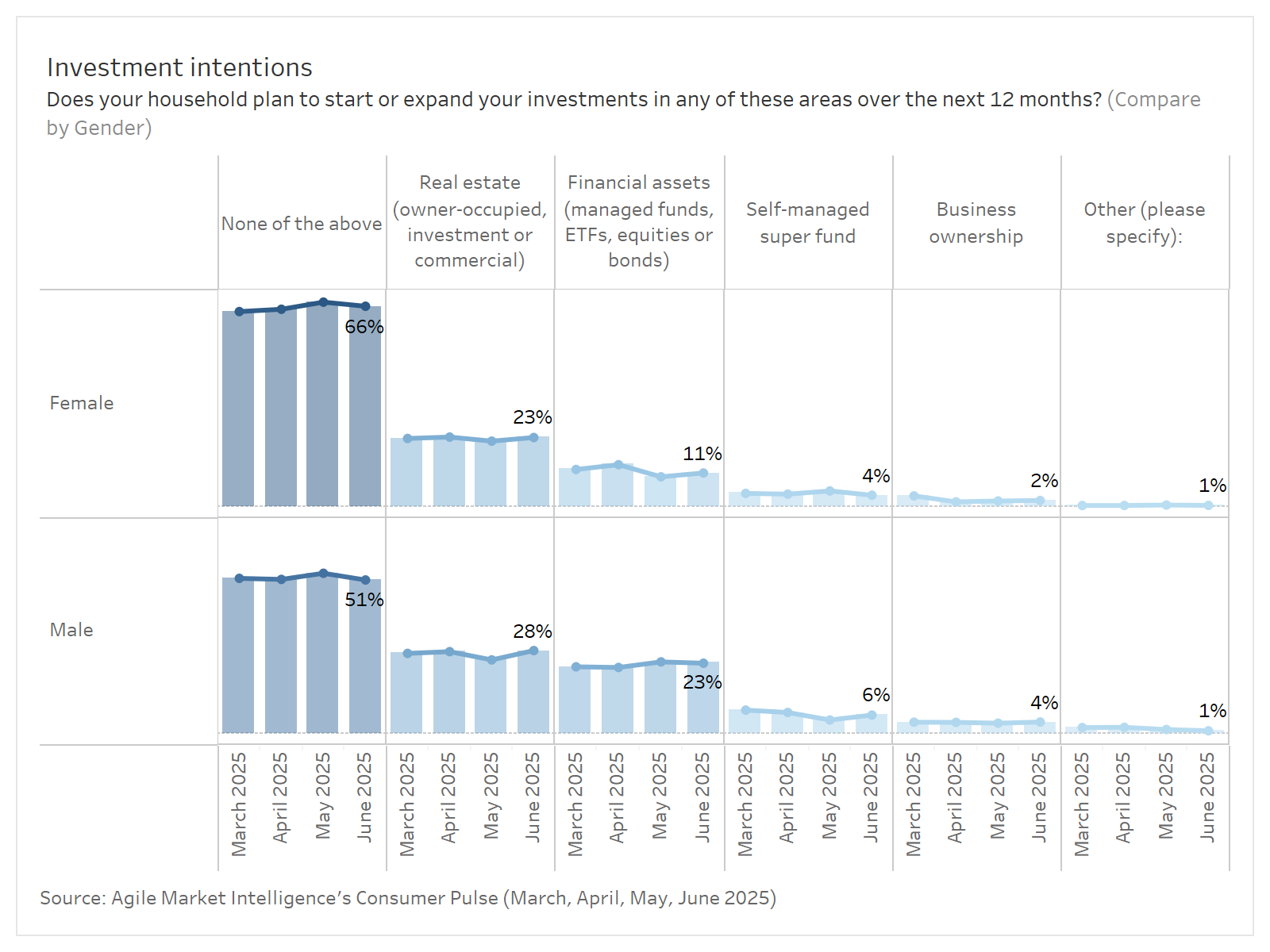
The latest data from Agile Market Intelligence’s Consumer Pulse reveals that property remains the most attractive investment option for Australian households over the next 12 months. While overall investment intentions are low, real estate stands out as the top target across all demographic groups, from self-employed professionals to young first-time buyers.
Key stats you need to know
- 25% of households intend to invest in real estate over the next year, more than any other asset class.
- 59% of households say they do not plan to invest in any asset class over the next 12 months.
- Real estate investment intentions outpace financial assets, business ownership and SMSFs by a wide margin.
Most households are not planning to invest, those that are - are focused on property
- 59% of households say they do not intend to start or expand any investments in the next 12 months. This figure has remained stable from March to June 2025, showing limited change in sentiment over the period.
- Real estate is the leading investment choice among those who do plan to invest, with 25% selecting it.
- Financial assets such as equities, ETFs and bonds attract just 17% of households. Fewer than 5% of households plan to invest in SMSFs, business ownership, or other categories.
The majority of Australian households remain cautious, with nearly six in ten choosing to hold off on any form of investment in the year ahead. While the property market continues to draw committed interest, most households are prioritising financial stability over portfolio expansion.
“Australians have always had a deep affinity for property — it’s seen as both a financial asset and a symbol of security,” said Michael Johnson, Director at Agile Market Intelligence. “Even when broader investment appetite is low, real estate remains the one constant in the national mindset.”
“However, with household budgets under pressure from rising living costs, it’s no surprise many Australians are pausing investment plans,” said Michael Johnson. “For a growing share of the population, the focus has shifted from building wealth to maintaining financial stability.”

Young people and men more likely to invest
- Among 18–34 year-olds, 40% plan to invest in property, the highest of any age group. This cohort also leads in financial asset investment, with 24% targeting shares, ETFs or managed funds.
- Investment intent declines sharply with age: only 10% of those aged 55+ plan to invest in real estate, and 79% plan no investments at all.
- 28% of men intend to invest in property, compared to 23% of women. Two-thirds of women (66%) say they do not plan to invest in any asset, compared to just over half of men (51%).
Younger Australians remain the most investment-active, with a stronger appetite across both property and financial assets. In contrast, older age groups are largely disengaged, likely due to shifting financial priorities in later life. The gender gap in investment activity is also pronounced, with women less likely to plan any investment, a pattern that reflects broader disparities in income, risk appetite, and access to advice.
“We’re seeing a clear divide, younger Australians and men are driving most of the activity,” said Michael Johnson. “But the high share of women and older Australians not investing signals a need for more inclusive financial engagement.”


About Consumer Pulse
The Consumer Pulse is a monthly tracker of over 1,500 Australian consumers developed by Agile Market Intelligence to monitor consumer sentiment, financial stress, and behavioural shifts across key household segments. The survey provides a real-time view of financial wellbeing in Australia, segmented by debt status and home ownership.


